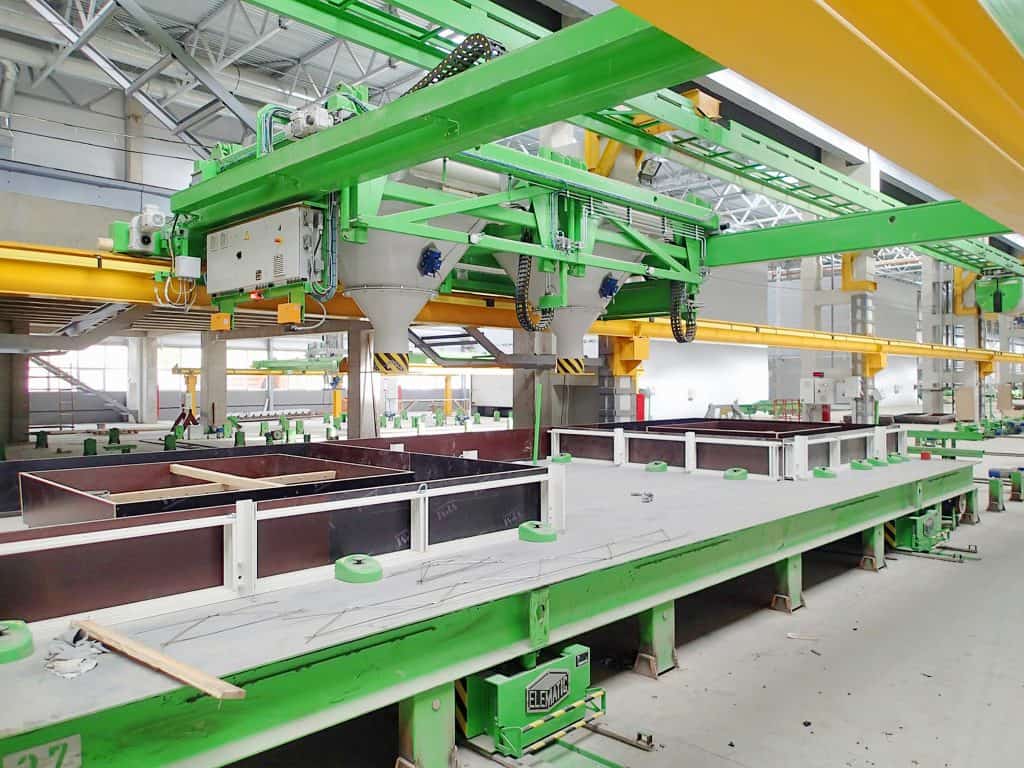Elematic’s FaMe shuttering system continues its development to offer a timesaving and versatile way to shape precast concrete products to different specifications. The FaMe system, which consists of two different methods for furnishing molds, jaw-type magnets of various types and light aluminum side profiles, is an essential part of a modern precast factory. Magnets hold the side forms during the casting and vibration processes, replacing the old methods of welding and bolting, which are not recommended in modern factories.
Saving time and money
Elematic’s FaMe fastening method is well known as a profitable investment.
“Our system comes with aluminum side profiles, applicable for wall thickness of up to half a meter. It significantly decreases the weight of the side in comparison with steel forms. The element’s side form can be moved by a single employee without requiring a crane,” explains Tero Mäki, Elematic’s Sales Engineer for FaMe Products.
Karkas Monolit’s modern new precast factory in Russia stands as a good example of full-scale utilization of FaMe. The new production plant opened in 2015 is equipped with a production line for sandwich and partition wall panels, molds and machinery for producing ventilation shafts and stairs, a concrete transportation system and FaMeFlex pro, the most efficient furnishing method in the FaMe family.
“The FaMeFlex pro system is fully utilized on the factory’s circulating line, saving time and money due to the light profile materials and straightforward casting process,” Mäki says. “Karkas Monolit is pleased with the efficient system. The company wants to exploit it increasingly to accelerate its production.”
Cutting down on work phases
The need for a flexible system update with a reasonable price tag is another common reason to utilize FaMe.
“FaMe side profiles and magnets can be tailored to any existing side form system made from different materials, such as steel or wood. The system is modular; you can start with a limited number of components and build the system as your need grows. Fine-tuning the existing FaMe system is thus easy – our customers may want to replace the old magnet, weighing six kilos, with the safer push-button magnet of four kilos,” Mäki says.
The FaMe system now features a special window mold, as well as a two-sided push-button magnet. This solution will reduce the number of work phases in diverse element production.
“The window mold comes with a diagonal form, like a half-cut pyramid. Thanks to this special solution, a window mold can be cast and lifted in one piece without additional demoldings,” Mäki explains.
Easy to fix and reuse
Damage and dents cannot be avoided in large-scale production. A comprehensive maintenance and repair service is a vital part of the FaMe system.
“Even though the structure of magnets is very strong, buttons may break and covers crack if the instructions are not followed. Spare parts are available for the magnets and profiles, so they are easy to fix. Scuffed profiles can be repainted,” Mäki advises.
With proper use, parts of the FaMe system have a very long lifetime. The first Elematic magnets were launched in 1995 and are still in use at factories. Moreover, aluminum as a material is very durable and has a good recycling value. The flexible use of sides also extends the system’s lifetime.
“The side forms can be cut to different lengths according to needs and utilized for many different purposes.”
